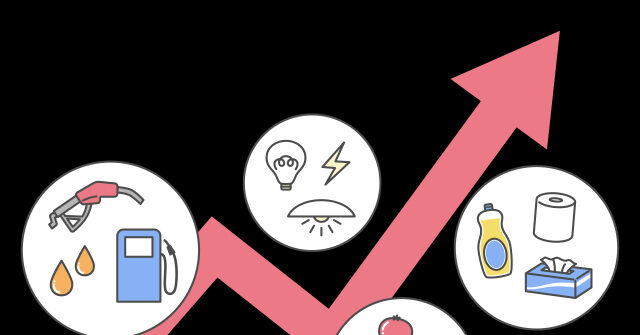Breitbart Business Digest: Many Americans Still Think Inflation Is Going Higher

How much does the American public trust the Federal Reserve when it says it will bring down inflation in the near-term? Public confidence in the Fed’s inflation-fighting ability matters because under most mainstream models of inflation—including those used by the Fed—the rate of price changes is largely the result of a combination of inflation expectations and labor market slack. Right now we’ve got a very tight labor market, with 1.7 vacant jobs for each unemployed person. So it is particularly worrisome that there are signs that inflation expectations are not coming down. Forty-four percent of Americans said they expect inflation to be higher six months from now than it is today, according to an Economist/YouGov poll of 1,500 adult U.S. citizens taken between October 1 and October 3. That’s up slightly from the poll taken between September 3-6, which showed that 42 percent think the rate of inflation will be higher.
The share expecting the rate of inflation to slow fell from 19 percent in the September poll to 15 percent in the October poll.
The share expecting inflation to remain the same held steady at 22 percent. Federal Reserve Chair Jerome Powell, right, and Vice Chair Lael Brainard at a Fed Listens event in Washington, DC, on Sept. 23, 2022. (Al Drago/Bloomberg via Getty Images) The public’s view stands in marked contrast to that of most economists, including those at the Federal Reserve.
The Fed’s summary of the economic projections of participants at its monetary policy committee hearing in late September showed that the median forecast had the 12-month gain of the price index of personal consumption expenditures falling to 5.4 percent by year’s end, down from 6.2 percent in August and 6.4 percent in July. Core personal consumption expenditure inflation is expected to fall to 4.5 percent, down from 4.7 percent in July and 4.9 in August.
The Fed may not care much about the results of the Economist and YouGov poll. In the first place, people may not understand the question.
The poll asks whether the rate of inflation will be higher, lower, or about the same. It’s very easy to imagine that most people answered a slight different question: Will prices be higher, lower, or about the same. So perhaps the poll is not really measuring what it appears to be. The Fed does pay attention to the University of Michigan’s consumer survey. Over the past few months, this has shown a steady decline in consumer expectations of inflation one year from now.
The three-month moving average has fallen from 5.4 percent in May to 4.9 percent in September.
The three-month average of five-year expectations, which had been stuck at the elevated level of three percent since January, fell to 2.9 percent in the recent year.
These may provide some reassurance to Fed officials. But should they? In August of last year, the public was expecting 4.6 percent inflation a year out. Instead, prices rose 8.3 percent, according to the Consumer Price Index (CPI). If the public is once again underestimating inflation by a similar amount, inflation would rise to 8.8 percent a year from now. In other words, the University of Michigan’s survey may actually be closer to the Economist and YouGov survey than it first appears. A woman shops for oat milk at a supermarket in Santa Monica, California, on September 13, 2022. (APU GOMES/AFP via Getty Images) The Economist/YouGov poll had another warning sign that the Fed may not be persuading people that it can get inflation under control.
The share of people who described inflation as “very important” jumped from 64 percent in the September survey to 74 percent in the October survey. That gain was almost entirely from people moving out of the view that inflation is “somewhat important,” which fell to 20 percent from 28 percent. So inflation is now more salient to those who were already feeling its effects.
The University of Michigan will release its preliminary October reads of inflation expectations and consumer sentiment on Friday, so we’ll get a glimpse at whether the September progress in that survey has continued or stalled. Many economists think gasoline prices and grocery prices have a big effect on inflation expectations. Grocery prices are still rising sharply, and gasoline prices are once again increasing.
The Bureau of Labor Statistics will, on Thursday, release the September CPI.
The month-to-month figure is expected to show an acceleration of inflation from 0.1 percent in August to 0.2 percent in September. That should bring down the year-over-year gain to 8.1 percent from 8.3 percent. Core inflation—which excludes energy and food prices—is expected to slow to a 0.4 percent monthly gain from 0.6 percent in August. Year-over-year, however, core CPI is seen as rising to 6.5 percent from 6.3 percent. It’s very likely that we’ll continue to see upward movement in measures of underlying inflation such as the Cleveland Fed’s median inflation or our own FoodCore measure (core inflation with food added back in).
Read the full article at the original website
References:
